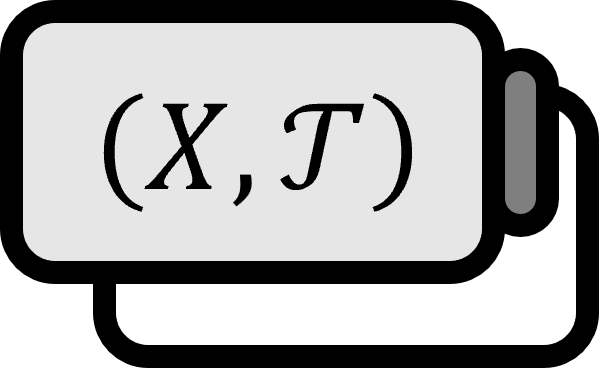Uniform Continuity Theorem
Definition
Given a metric space $(X, d)$ and $(Y, d’)$, let’s say $f : X \to Y$. If for every $\varepsilon > 0$ and $x_{1}, x_{2} \in X$ there exists a $\delta > 0$ satisfying $$ d(x_{1}, x_{2}) < \delta \implies d’( f( x_{1} ) , f( x_{2} ) ) < \varepsilon $$ then $f$ is said to be Uniformly Continuous.
Explanation
Just like how the concept of continuity learned in analysis was generalized in topology, uniform continuity can also be generalized in topology. However, it’s important to note that unlike continuity, it’s not defined for all topological spaces, but is discussed only in metric spaces.
The following theorem is a generalization of a fact well known in analysis.
Theorem 1
If $(X,d)$ is a compact metric space, $(Y,d’)$ is a metric space, and $f : X \to Y$ is a continuous function, then $f$ is uniformly continuous.
Proof
Let’s assume $\varepsilon > 0$ is given. Since $f$ is continuous, for each $x \in X$, there exists a $\delta_{x} > 0$ satisfying $$ d (x,y) < \delta_{x} \implies d’ \left( f(x) , f(y) \right) < {{ \varepsilon } \over { 2 }} \qquad , \forall y \in X $$ Such $\delta_{x}$s make $\left\{ B_{d} \left( x , {{ \delta_{x} } \over { 2 }} \right) : x \in X \right\}$ an open cover of $X$, and since $X$ is compact, there exists a finite set $\left\{ x_{1} , \cdots , x_{n} \right\} \in X$ satisfying $$ X = \bigcup_{i=1}^{n} B_{d} \left( x_{i} , {{ \delta_{x_{i}} } \over { 2 }} \right) $$ Therefore, we can assure the existence of $\delta > 0$ as in $$ \delta := \min \left\{ {{ \delta_{x_{1}} } \over { 2 }} , \cdots , {{ \delta_{x_{n}} } \over { 2 }} \right\} $$ Since $ X = \bigcup_{i=1}^{n} B_{d} \left( x_{i} , {{ \delta_{x_{i}} } \over { 2 }} \right)$, for $x \in X$, there must exist some $1 \le j \le n$ such that $$ x \in B_{d} \left( x_{j} , {{ \delta_{x_{j}} } \over { 2 }} \right) $$ Hence, $$ d \left( x_{j} , y \right) \le d \left( x_{j} , x \right) + d (x,y) < {{ \delta_{x_{j}} } \over { 2 }} + \delta \le \delta_{x_{j}} \implies d’ \left( f(x_{j}) , f(y) \right) < {{ \varepsilon } \over { 2 }} \\ d \left( x_{j} , x \right) \le {{ \delta_{x_{j}} } \over { 2 }} < \delta_{x_{j}} \implies d’ \left( f(x_{j}) ,f( x) \right) < {{ \varepsilon } \over { 2 }} $$ ensures that there exists a $\delta > 0$ whenever $d(x , y) < \delta$, meaning, $f$ is uniformly continuous.
■
Munkres. (2000). Topology(2nd Edition): p176. ↩︎
